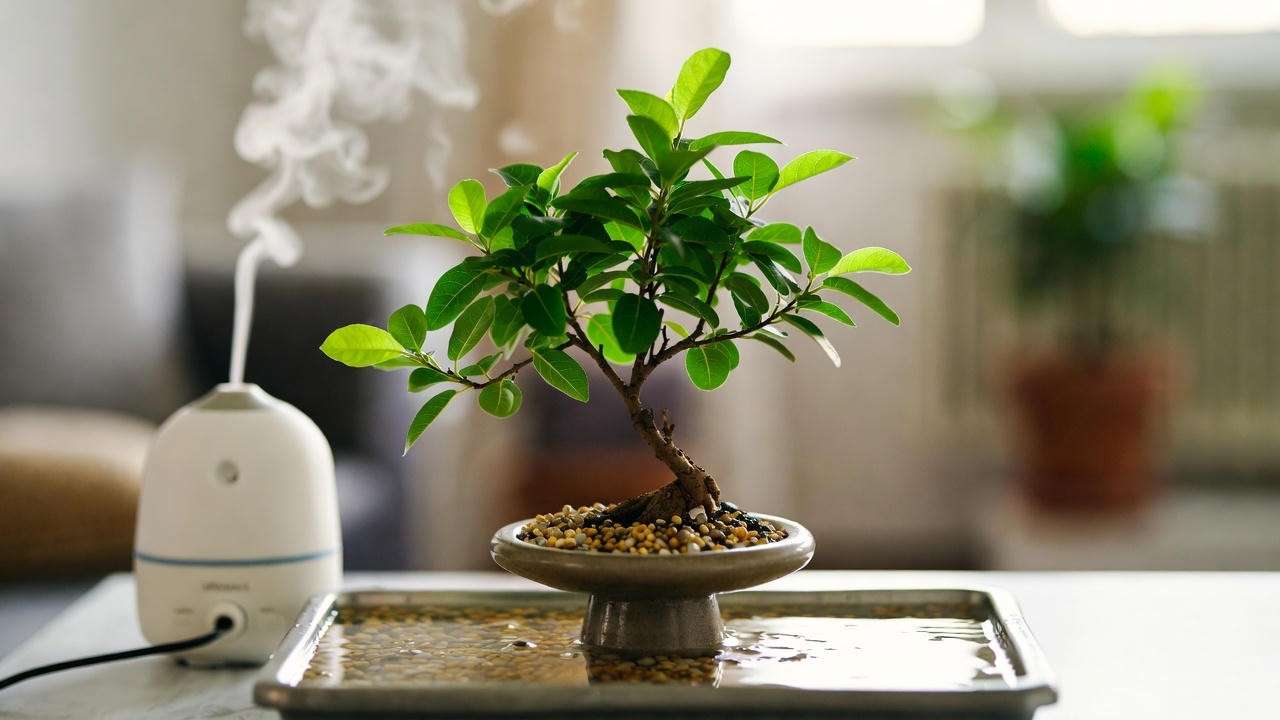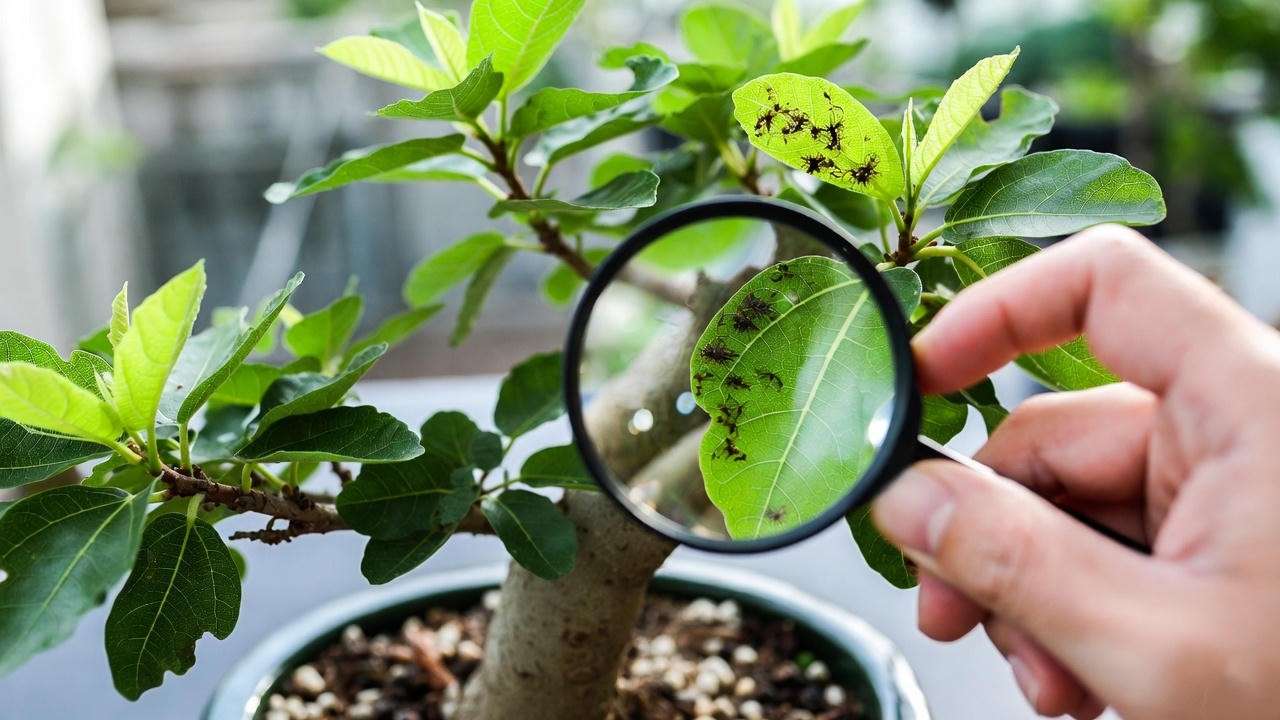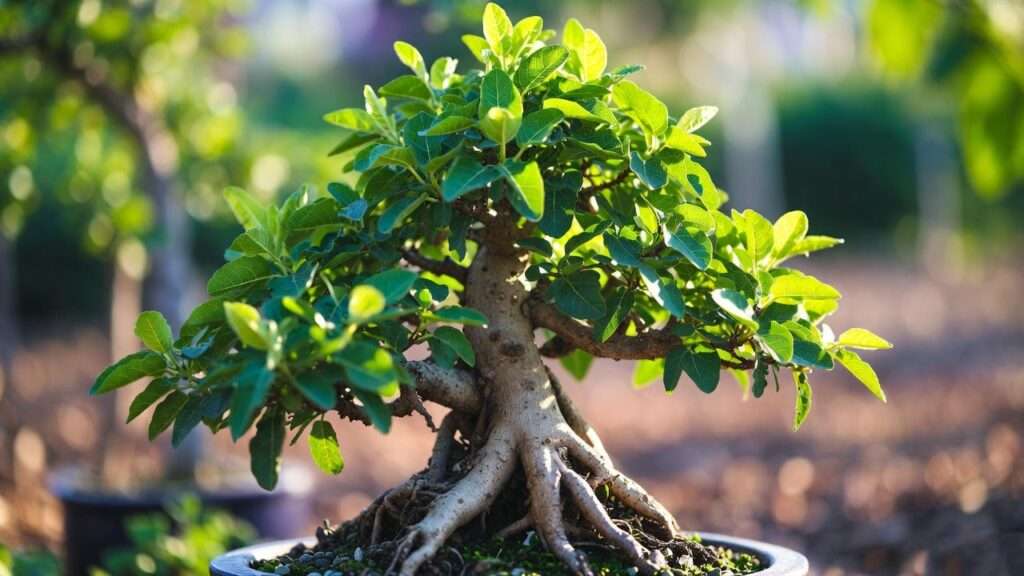Imagine a tiny tree, its glossy leaves shimmering under soft light, its gnarled roots weaving a story of resilience—a living sculpture that transforms your home into an art gallery. This is the allure of the fig bonsai tree, a captivating Ficus species that’s stealing the hearts of plant enthusiasts worldwide. But here’s the catch: while its beauty is undeniable, the fig bonsai demands precise care to thrive. From watering woes to pruning puzzles, one misstep can dim its charm. Fear not! This guide delivers 7 expert-backed tips to ensure your fig bonsai flourishes, whether you’re a beginner or a seasoned grower. Drawing on years of bonsai cultivation and insights from horticulturists, this article will empower you to nurture a thriving miniature masterpiece. Ready to dive into the art and science of fig bonsai care? Let’s grow! 🌳
Understanding the Fig Bonsai Tree: A Living Work of Art 🎨
What Makes the Fig Bonsai Unique?
The fig bonsai, often crafted from Ficus species like Ficus retusa, Ficus microcarpa, or Ficus benjamina, is a marvel of nature’s design. Its compact size, lush green foliage, and intricate aerial roots create a striking visual that blends elegance with rugged charm. Unlike traditional houseplants, the fig bonsai is a dynamic creation, shaped by careful pruning and wiring to evoke ancient trees in miniature form. Varieties like Ficus ginseng boast bulbous roots that add a whimsical touch, making them a favorite for bonsai artists. Beyond aesthetics, the fig bonsai carries cultural weight, symbolizing harmony and endurance in bonsai traditions rooted in East Asian philosophy.

Why Proper Care Matters
A fig bonsai isn’t just a plant—it’s a commitment. Neglect, such as overwatering or insufficient light, can lead to leaf drop, root rot, or stunted growth, turning your masterpiece into a wilted shadow. Conversely, proper care rewards you with a vibrant, long-lived tree that enhances your space and soothes your soul. “The fig bonsai thrives on balance,” says bonsai master Keiichi Fujikawa. “Respect its needs, and it will repay you with timeless beauty.” This guide ensures you master that balance, avoiding common pitfalls while unlocking the full potential of your fig bonsai.
Tip 1: Perfecting Light and Placement for Your Fig Bonsai ☀️
Ideal Lighting Conditions
Light is the lifeblood of your fig bonsai. These trees crave bright, indirect light, mimicking their natural tropical habitat. Place your bonsai near an east- or west-facing window where it can bask in gentle morning or afternoon sun. If direct sunlight is unavoidable, diffuse it with sheer curtains to prevent leaf scorch. In low-light homes, consider a grow light with a 6500K spectrum, set for 12-14 hours daily. A common mistake? Parking your bonsai in a dim corner, which weakens growth and dulls its vibrancy. Check for signs of light stress: leggy branches signal too little light, while crispy leaves indicate too much.
Choosing the Right Spot
Placement goes beyond light—it’s about stability. Fig bonsais dislike drafts, heating vents, or sudden temperature swings, which can trigger leaf drop. Indoors, a spot with consistent conditions (e.g., a living room shelf) works best. For growers in warm climates (USDA zones 9-11), transitioning your bonsai outdoors in spring or summer can boost growth, but acclimate it gradually to avoid shock. Take inspiration from Sarah, a bonsai enthusiast who revived her struggling Ficus microcarpa by moving it from a drafty hallway to a sunny, stable nook. Her tree now boasts lush foliage year-round.
Tip 2: Mastering Watering Techniques 💧
How to Water a Fig Bonsai Correctly
Watering a fig bonsai is an art form, balancing moisture without drowning the roots. The goal: keep the soil moist but not soggy. Here’s how:
- Check moisture: Insert a chopstick or your finger 1 inch into the soil. If it feels dry, it’s time to water.
- Water thoroughly: Pour water evenly until it drains from the pot’s holes, ensuring all roots are hydrated.
- Adjust frequency: Water every 3-5 days in summer, less often in winter, depending on humidity and pot size.
A well-draining bonsai soil mix (e.g., akadama, pumice, lava rock) is crucial to prevent waterlogging. For precision, a moisture meter can eliminate guesswork.
Avoiding Watering Pitfalls
Overwatering is the top killer of fig bonsais, causing yellowing leaves or mushy roots. Underwatering, on the other hand, leads to dry, curling leaves. “I learned the hard way,” shares grower Emily, who lost her first bonsai to soggy soil. “Now, I let the soil guide me.” To avoid her fate, ensure your pot has drainage holes and never let it sit in standing water. If you suspect overwatering, check the roots and trim any rot before repotting in fresh soil. Consistency is key—stick to a routine tailored to your tree’s needs.
Tip 3: Nailing Humidity and Temperature Control 🌡️
Creating a Humid Microclimate
Fig bonsais hail from humid tropics, thriving in 50-70% humidity. Most indoor environments fall short, especially in winter with heaters running. To boost humidity:
- Use a humidity tray: Fill a shallow tray with pebbles and water, placing the pot above the waterline.
- Group plants: Cluster your bonsai with other houseplants to create a microclimate.
- Mist sparingly: Light misting can help, but avoid overdoing it, as wet leaves invite fungal issues.
A humidifier is a game-changer for serious growers, maintaining stable moisture levels. Beware of over-misting, which can lead to leaf spot or mold.

Optimal Temperature Range
Fig bonsais prefer 65-85°F (18-29°C), with a minimum of 55°F (13°C) to avoid stress. Protect your tree from cold drafts or hot radiators, which can trigger leaf drop. In warm seasons, outdoor placement (in partial shade) can invigorate growth, but bring it indoors before temperatures dip. In winter, a grower named Raj used a mini greenhouse to maintain humidity and warmth, transforming his Ficus ginseng into a showpiece. Seasonal adjustments are vital—monitor your home’s conditions and adapt to keep your bonsai cozy.
Tip 4: Fertilizing for Vigorous Growth 🌸
Choosing the Right Fertilizer
Fertilizing fuels your fig bonsai’s growth, ensuring lush leaves and strong roots. Opt for a balanced, water-soluble fertilizer (e.g., 10-10-10) or a bonsai-specific blend. Apply every 2 weeks during spring and summer, scaling back to monthly in fall and winter. Organic options like fish emulsion or seaweed extract offer natural nutrients, promoting steady growth without chemical buildup. “Fertilizing is like feeding a child,” notes horticulturist Dr. Lisa Chen. “Too little starves them; too much overwhelms.” Dilute to half-strength to protect delicate roots.
Avoiding Over-Fertilization
Over-fertilizing can burn leaves or cause salt buildup in the soil, visible as white crust. If you spot these signs, flush the pot with water to rinse excess nutrients. A 2021 study on Ficus nutrient uptake found that moderate, consistent feeding maximizes health without stress. To stay safe, follow package instructions and observe your tree’s response. If growth slows despite fertilizing, check for other issues like poor light or root-bound conditions. Patience and precision keep your bonsai thriving.
Tip 5: Pruning and Shaping Your Fig Bonsai ✂️
Pruning for Health and Aesthetics
Pruning is the heart of bonsai artistry, keeping your fig bonsai healthy and visually stunning. There are two types: maintenance pruning, which removes dead, yellow, or overcrowded leaves to boost airflow, and structural pruning, which shapes branches to craft the tree’s form. For fig bonsais, prune in early spring when the tree is gearing up for growth, using sharp, sterilized bonsai shears to make clean cuts above leaf nodes. This encourages new shoots and maintains the tree’s compact silhouette. Avoid heavy pruning in winter, as it can stress the tree. A clear plan is key—visualize the desired shape, whether it’s a classic upright style or a dramatic cascade.

Wiring for Shape
To sculpt your fig bonsai’s branches, wiring is a powerful technique. Use anodized aluminum wire (1-3 mm thick, depending on branch size) to gently guide branches into position. Wrap the wire at a 45-degree angle, avoiding tight coils that can scar the bark. Leave wires in place for 1-2 months, checking regularly to ensure they don’t cut into growing branches. For inspiration, consider grower Tom’s Ficus retusa, transformed from a bushy mess into a graceful tiered form through careful wiring. Patience is crucial—rushing can damage your tree, while steady adjustments yield lasting beauty.
Tip 6: Repotting for Long-Term Health 🪴
When and Why to Repot
Repotting refreshes your fig bonsai’s soil, prevents root-bound issues, and promotes vigorous growth. Young trees need repotting every 1-2 years, while mature ones can wait 3-5 years. Look for signs it’s time: roots circling the pot, slow growth, or soil that stays wet too long. The best season is early spring, when the tree is entering its active growth phase. Repotting not only replenishes nutrients but also allows you to trim overcrowded roots, ensuring the tree stays healthy and proportionate.
Step-by-Step Repotting Guide
Follow these steps for a successful repot:
- Prepare materials: Gather a slightly larger bonsai pot, fresh soil (50% akadama, 25% pumice, 25% lava rock), and pruning shears.
- Remove the tree: Gently lift the bonsai from its pot, shaking off old soil.
- Trim roots: Cut back 20-30% of the roots, focusing on thick or circling ones, to encourage new growth.
- Repot: Place the tree in the new pot, spread roots evenly, and fill with soil, pressing firmly to eliminate air pockets.
- Water and rest: Water thoroughly and place the bonsai in partial shade for 2-3 weeks to recover.
Aftercare is critical—avoid fertilizing for a month to let roots settle. Grower Maria credits her thriving Ficus microcarpa to biennial repotting, which keeps her tree vibrant and balanced.

Tip 7: Preventing and Treating Common Pests and Diseases 🐛
Identifying Common Threats
Even with stellar care, fig bonsais can face pests like spider mites, scale, or aphids, as well as diseases such as root rot or leaf spot. Spot pests by checking for webbing, sticky residue, or discolored leaves. Diseases often show as black spots or wilting foliage. Weekly inspections are your first defense—catching issues early prevents escalation. “Vigilance is everything,” says bonsai expert Aiko Tanaka. “A quick scan can save your tree.” Use a magnifying glass for close-ups, especially on leaf undersides where pests hide.

Safe and Effective Treatments
For pests, start with natural remedies:
- Neem oil: Dilute and spray weekly to deter pests.
- Insecticidal soap: Apply to affected areas, rinsing after 10 minutes.
- Manual removal: Wipe scale or aphids with a damp cloth.
For diseases, improve air circulation and adjust watering to keep leaves dry. Severe cases may require a fungicide, but use sparingly and follow instructions. Prevention is best: quarantine new plants, maintain optimal care, and clean tools to avoid cross-contamination. A grower named Liam saved his bonsai from spider mites by combining neem oil with better humidity, proving that persistence pays off.
Troubleshooting Common Fig Bonsai Problems 🔍
To help you tackle issues fast, here’s a quick-reference table for common fig bonsai woes:
| Problem | Possible Cause | Solution |
| Leaf drop | Sudden light/temperature change | Gradually adjust placement; stabilize conditions |
| Yellowing leaves | Overwatering or poor drainage | Check soil; repot if soggy; reduce watering |
| No growth | Insufficient light or nutrients | Optimize light; fertilize regularly |
| Crispy leaves | Low humidity or too much sun | Increase humidity; diffuse direct sunlight |
| Sticky leaves | Aphids or scale infestation | Apply neem oil; inspect regularly |
If your issue persists, share details in the comments below—I’m happy to offer tailored advice! Engaging with your bonsai’s signals builds your skills and strengthens your bond with the tree.
The Joy of Growing a Fig Bonsai: Long-Term Rewards 🌟
Caring for a fig bonsai is more than a hobby—it’s a journey of patience, creativity, and connection to nature. Each pruned branch, each new leaf, tells a story of your dedication. A thriving bonsai not only elevates your home’s aesthetic but also calms your mind, offering a meditative escape from daily stress. As you master these 7 tips, you’ll unlock the rewards of a miniature masterpiece that grows with you. Stay consistent, embrace the learning curve, and let your fig bonsai inspire awe for years to come. Share your progress with #FigBonsaiCare—your community is cheering you on!
FAQs: Your Fig Bonsai Questions Answered ❓
Q1: How often should I water my fig bonsai?
A: Water when the top inch of soil feels dry, typically every 3-5 days in summer and less in winter. Use a moisture meter for accuracy.
Q2: Can a fig bonsai survive indoors year-round?
A: Yes, with bright, indirect light, stable temperatures (65-85°F), and adequate humidity. Outdoor time in warm months can boost growth.
Q3: Why are my fig bonsai leaves dropping?
A: Common causes include sudden light changes, drafts, or overwatering. Stabilize conditions and check soil moisture.
Q4: How do I know if my bonsai needs repotting?
A: Look for circling roots, slow growth, or poor water absorption. Repot every 1-2 years for young trees, 3-5 for mature ones.
Q5: What’s the best fertilizer for a fig bonsai?
A: A balanced 10-10-10 fertilizer or bonsai-specific blend, applied biweekly in spring/summer and monthly in fall/winter, works well.
Conclusion: Your Path to a Thriving Fig Bonsai 🌳
Mastering fig bonsai tree care is within your reach. By perfecting light, watering, humidity, fertilizing, pruning, repotting, and pest control, you’ll transform your bonsai into a thriving work of art. These 7 essential tips, grounded in expert insights and real-world success stories, empower you to avoid pitfalls and embrace the rewards of bonsai cultivation. Bookmark this guide, apply these strategies, and join a bonsai community—like the American Bonsai Society or online forums—for ongoing support. Your fig bonsai’s journey starts now—grow with confidence and share your masterpiece with the world! 🌿













